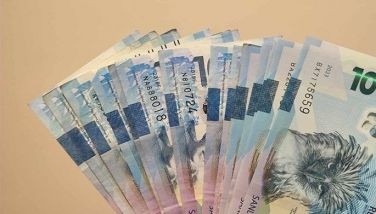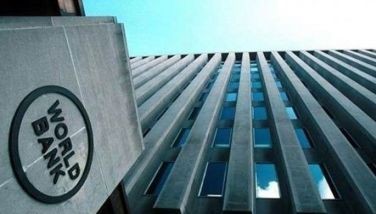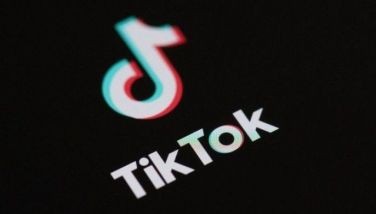SEC to decide on ASB rehab plan this week
April 23, 2001 | 12:00am
The Securities and Exchange Commission is set to decide within the week the fate of the proposed rehabilitation plan for the ASB Group of Companies even as the supposed "white knight" – Chevalier International Holdings Ltd. — has not made any formal manifestations yet.
SEC general counsel Eugenio Reyes said they are rushing the order to either approve or disapprove ASB’s rehabilitation plan in time for the expiration of the 60-day extension of the suspension of debt payments on Sunday, April 29.
The corporate regulator stretched ASB’s debt relief in consideration of the reported entry in late January of the Hong Kong-based Chevalier Holdings, whose business interests include investments in real estate.
The extension was the third granted by the SEC since the group sought the agency’s help in May last year as it defaulted on the payment of its bank debts and scrambled to pay off claims by other creditors due to the depressed state of the property sector.
The ASB Group, controlled by businessman Luke Roxas, owes roughly P4 billion to about 700 unsecured creditors consisting of individuals, contractors and suppliers. It also owes P5 billion to various banks, notably Allied Bank, Metropolitan Bank and Trust Co., United Coconut Planters Bank, Equitable PCI Bank and Rizal Commercial Banking Corp.
The unsecured creditors have signified their support for the rehabilitation plan but the secured bank creditors have opposed the motion on several grounds, the more significant of which involves the plan’s viability. They are insisting that the ASB Group has become insolvent and hence should be subject to liquidation.
Under the original rehabilitation plan, the ASB Group had proposed the settlement of its debts through dacion-en-pago or outright sale of its real estate assets. In addition, ASB will complete or sell ongoing projects and invite unsecured creditors to purchase real estate parcels and other assets and set off the amount of their outstanding claim against the purchase price.
The entry of Chevalier, which is supposed to infuse additional equity into ASB, would have improved the chances of getting the secured creditors’nod for the rehabilitation plan but the "white knight," according to the SEC, "has not been heard of ever since."
Chevalier has reportedly agreed to infuse fresh equity into ASB and floated three possible options for the settlement of the company’s debts. These are: a) the outright payment of 60 percent of total debts, hence a 40-percent discount; b) a 10-percent cash payment with the balance to be paid within 10 years, and c) payment in the form of condominiums developed by ASB.
The ASB Group is the owner and developer of numerous real estate projects, mostly condominium projects of which 19 are completed and four – the BSA Twin Tower, Garden Heights, the ASB Malayan Tower and Legaspi Place – are currently under various stages of construction.
At end-1999, total assets of ASB Holdings Inc., the group’s parent firm, was valued at P5.38 billion. – Conrado Diaz Jr.
SEC general counsel Eugenio Reyes said they are rushing the order to either approve or disapprove ASB’s rehabilitation plan in time for the expiration of the 60-day extension of the suspension of debt payments on Sunday, April 29.
The corporate regulator stretched ASB’s debt relief in consideration of the reported entry in late January of the Hong Kong-based Chevalier Holdings, whose business interests include investments in real estate.
The extension was the third granted by the SEC since the group sought the agency’s help in May last year as it defaulted on the payment of its bank debts and scrambled to pay off claims by other creditors due to the depressed state of the property sector.
The ASB Group, controlled by businessman Luke Roxas, owes roughly P4 billion to about 700 unsecured creditors consisting of individuals, contractors and suppliers. It also owes P5 billion to various banks, notably Allied Bank, Metropolitan Bank and Trust Co., United Coconut Planters Bank, Equitable PCI Bank and Rizal Commercial Banking Corp.
The unsecured creditors have signified their support for the rehabilitation plan but the secured bank creditors have opposed the motion on several grounds, the more significant of which involves the plan’s viability. They are insisting that the ASB Group has become insolvent and hence should be subject to liquidation.
Under the original rehabilitation plan, the ASB Group had proposed the settlement of its debts through dacion-en-pago or outright sale of its real estate assets. In addition, ASB will complete or sell ongoing projects and invite unsecured creditors to purchase real estate parcels and other assets and set off the amount of their outstanding claim against the purchase price.
The entry of Chevalier, which is supposed to infuse additional equity into ASB, would have improved the chances of getting the secured creditors’nod for the rehabilitation plan but the "white knight," according to the SEC, "has not been heard of ever since."
Chevalier has reportedly agreed to infuse fresh equity into ASB and floated three possible options for the settlement of the company’s debts. These are: a) the outright payment of 60 percent of total debts, hence a 40-percent discount; b) a 10-percent cash payment with the balance to be paid within 10 years, and c) payment in the form of condominiums developed by ASB.
The ASB Group is the owner and developer of numerous real estate projects, mostly condominium projects of which 19 are completed and four – the BSA Twin Tower, Garden Heights, the ASB Malayan Tower and Legaspi Place – are currently under various stages of construction.
At end-1999, total assets of ASB Holdings Inc., the group’s parent firm, was valued at P5.38 billion. – Conrado Diaz Jr.
BrandSpace Articles
<
>
- Latest
- Trending
Trending
Latest
























